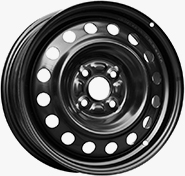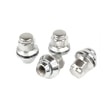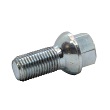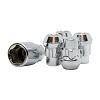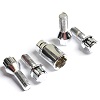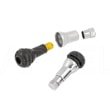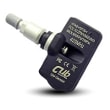Car VIN number: Where to find it and what does it reveal about your car?
A car's VIN is nothing more than its unique "identity card"—a string of characters that holds more information than you might think. Although many drivers ignore it, the chassis number allows you to check the car's history, verify its origin, and ensure that you're buying a vehicle that matches its documentation. For the owner, it's crucial for servicing and insurance, and for the buyer, it's a fundamental tool in assessing the seller's credibility. In this article, we'll show you what a VIN is, where to find it, and how to use it to uncover a car's true history. Prepare to become a detective and discover the hidden symbols—because VINs hold no secrets from us.
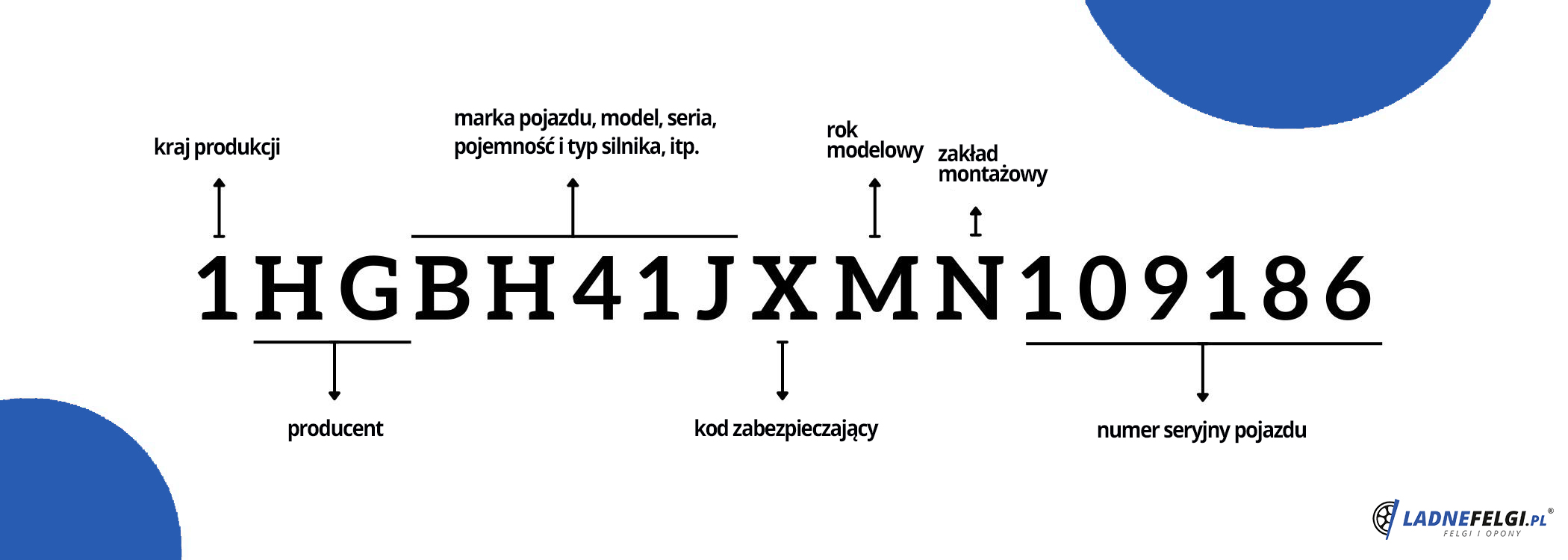
What Does a VIN Number Mean? – The Key to Your Vehicle's History
VIN – a unique identification code with global reach
A VIN (Vehicle Identification Number) is a unique, 17-character alphanumeric code assigned to every motor vehicle in the world. It serves as a unique identification number for a vehicle, similar to a person's PESEL (Polish National Identification Number). The VIN standard was defined by ISO 3779 and applies globally, meaning that no VIN is repeated for at least 30 years . This ensures that when analyzing a VIN, we are referring only to a specific vehicle, not to another vehicle from the same series. This is why VINs are a fundamental reference point when verifying a vehicle's history.
VIN Structure – Three Key Sections
While a VIN may seem like a random string of characters, it actually holds a wealth of information. Its structure is divided into three sections:
- WMI (World Manufacturer Identifier, characters 1–3) – identifies the manufacturer and country of origin of a car. Examples: W = Germany, J = Japan, S = Great Britain. This allows you to immediately identify where and by whom the car was manufactured.
- VDS (Vehicle Descriptor Section, characters 4–9) – describes vehicle characteristics, such as body type, engine type, platform, and model. In some cases, manufacturers also include information about the trim level here.
- VIS (Vehicle Indicator Section, digits 10–17) – this is the most individual part of the number. It contains the vehicle's serial number, model year (10th digit), and assembly plant (11th digit). It is thanks to VIS that even two nearly identical cars manufactured in the same year can be distinguished.
Decoding the VIN allows you not only to determine the basic data of the car, but also to obtain its full history.
What You WON'T Find in a VIN Number – An Important Distinction
While a car's VIN reveals a wealth of important information, there is a limitation that often leads to confusion. The VIN doesn't directly include the engine number – although it indicates the engine type, it's not the same as its unique designation. It's worth remembering that the engine number is found in the vehicle's registration certificate and is a separate technical designation. Therefore, when inspecting a car, especially before purchasing, it's important to distinguish between these two identifiers.
Where can I find my car's VIN number? - Hidden Locations Map

Standard Locations – Hassle-free VIN Discovery
If you're wondering, " Where is the VIN? ", it's worth checking these common places first. A car's VIN is located in a way that makes accessing it relatively easy for both the owner and diagnosticians:
- On the vehicle's identification plate – most often found on the B-pillar next to the driver's door, in the engine compartment, or in the trunk. The plate contains basic vehicle information, including the VIN.
- Behind the windshield – the vehicle's VIN is often located on the dashboard, on the driver's side. It's visible from the outside, so it can be easily read without opening the car.
- The registration certificate and vehicle log book are official documents that always include the chassis number. This is the simplest method of verifying that the vehicle's markings match the documents.
- On the frame or trunk floor – on some models, simply lift the trunk carpet to find the VIN stamped on it.
Less obvious places – for advanced searchers
Some cars hide their VIN numbers in less obvious locations. This is especially important if you're inspecting a car before purchasing and want to make sure all the markings are consistent:
- On the floor, under the driver or passenger seat – the chassis number is often cut into the bodywork and covered with a flap or mat.
- On body structural elements – in some models, the VIN can be found on side members, in wheel arches or in hard-to-reach parts of the vehicle structure.
- On information stickers – manufacturers place them, for example, on doors, pillars or inside the trunk lid.
By checking these locations you will be sure that the chassis number has not been intentionally removed or altered.
What are the differences in locations depending on manufacturer and year?
There's no single, universal rule for all makes and models. The VIN number in European cars is often found on pillars and plates, while in Asian vehicles, it's more often located in the engine compartment or on frame components. In older models, it was hidden deeper, often requiring the removal of upholstery or interior components.
That's why it's always worth consulting your vehicle's owner's manual - it's the most reliable source of information that will show you the exact location of your VIN number in your car.
How to Check a Vehicle's VIN Number – Your First Step to an Informed Transaction
Visual verification – what should you be concerned about?
The first and most important step is to examine the vehicle's VIN. Before using decoders or databases, make sure the markings on the car look credible. Make sure the chassis number is clear, legible, and evenly stamped – all letters and numbers should have the same font and spacing.
If you notice any signs of sanding, alterations, or unevenness in the marking, it's a sign that someone may have tried to tamper with the marking. Furthermore, every VIN on the vehicle—on the data plate, windshield, and elsewhere—must be identical. If there are any differences between them, it's best to avoid the purchase immediately.
Checking the VIN number in the vehicle documents
The next step is to compare what's on the car with the entries in the documents. The VIN on the registration certificate and vehicle registration card (if issued) should always match the markings physically stamped on the car. Any discrepancy – even a minor typo – is cause for concern. This may indicate registration errors, but more often indicates an attempt to conceal the car's illegal origin. Therefore, if you're wondering how to check the VIN, start with the simplest method: compare the car with its documents and be alert for the slightest discrepancies.
Online VIN decoders - Your quick verification tool
Today, you don't need to be a mechanic or an expert to decode VIN data. Simply use free or paid online VIN decoders. These tools allow you to check information such as make, model, year of manufacture, engine type, and even a list of factory equipment in seconds.
This is a simple way to ensure that the seller's description of the car is accurate. If the seller's statements differ from what the decoder shows, it's a sign that the car may have a questionable history. Therefore, if you're wondering how to check a car by VIN , an online decoder will be your first and easiest verification tool.
When is it worth checking your VIN? – Don't be fooled!
Buying a used car – a mandatory verification element
The most important time to check a vehicle's VIN is when buying a used car. This number allows you to verify whether the seller is telling the truth about the car's history. A VIN check can reveal mileage rollbacks , information about accidents , flooding , or total losses , and can also check for stolen property records. The VIN can also reveal whether the vehicle has a bank lien, which could prevent its registration. If you're wondering when to check the VIN , the answer is simple: always before signing the contract to avoid being scammed and costly consequences.
Verification of vehicle history in official databases
The second step is to check the VIN in available databases. In Poland, there's a free system called HistoriaPojazd.Gov.pl , where you can verify information such as the vehicle's mileage, valid technical inspections, third-party liability insurance, and basic technical data. For cars imported from abroad, it's worth using paid reports like Carfax or AutoDNA , which utilize extensive international databases. These will allow you to verify whether the car has been involved in any serious accidents, has not been deregistered in another country, or whether its data raises any questions. If you're wondering how to check a car by VIN, official registries and certified reports are your best tools.
Other situations where the VIN is crucial
The VIN isn't just important when purchasing a car – it also plays a crucial role later, in everyday use. A car's VIN is crucial when servicing and ordering parts – only with it will a mechanic select the right components and avoid mistakes. The VIN is also essential when signing an insurance contract – without it, you won't be able to purchase third-party liability (OC) or comprehensive (AC) insurance. In the event of a collision or theft , the VIN is used to identify the vehicle and report a claim. Furthermore, when purchasing new rims or tires , the VIN can be helpful in verifying the correct technical parameters. This demonstrates that the chassis number accompanies the driver throughout the car's lifespan and in every important situation related to its operation.

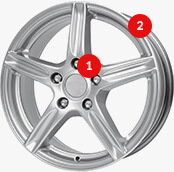

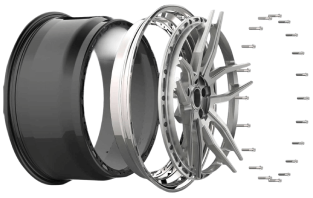
 Modern design
Modern design Perfect fit
Perfect fit High durability
High durability Free shipping within 24 hours
Free shipping within 24 hours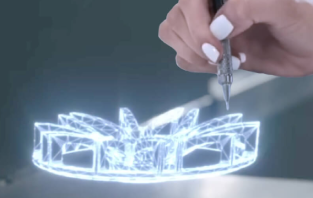
 Individual project
Individual project Dedicated caregiver
Dedicated caregiver